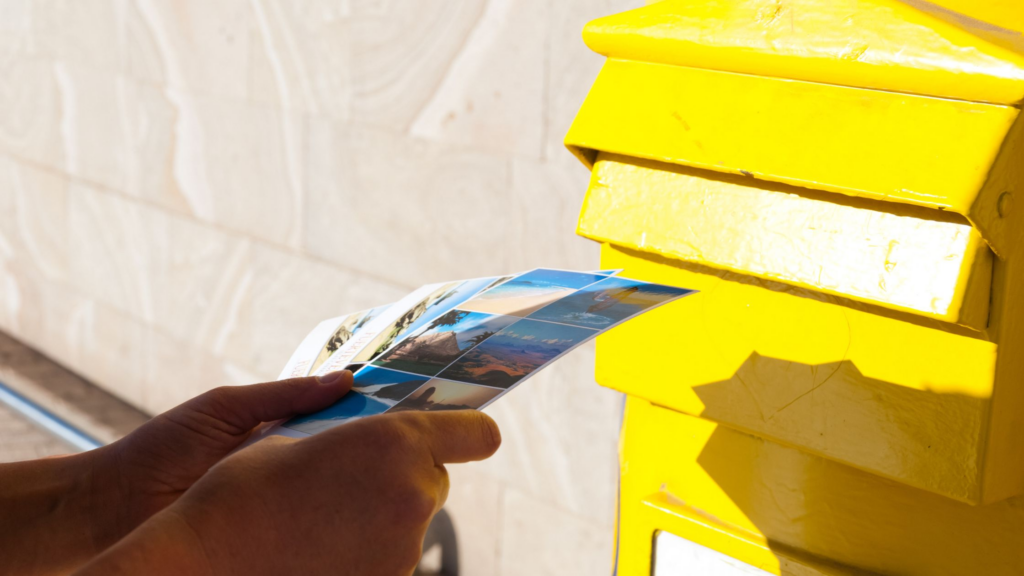If you wish to grow your business, the golden rule of marketing is to increase website traffic. We would naturally assume online marketing strategies are the way – perhaps, the only way. But surprisingly, we find many top-line marketers successfully leverage traditional offline marketing strategies to drive web traffic.
Traditional offline marketing strategies include television, radio, print, and outdoor ads as well as events, direct mail, door-to-door, and hand-to-hand campaigns. We still watch television, listen to the radio, and drive past billboards, but it’s the old-fashioned direct mail, flyers, and letterbox drops that are driving web traffic. Sounds odd, doesn’t it, especially when COVID-19 has forced most businesses to shift online?
How can the good old direct mail drive online purchases when almost everyone communicates through email? Aren’t online marketing strategies like blogs and social media posts the proven way to boost web traffic? Yes, they get us the numbers, but not necessarily high-quality leads. However, data-driven offline campaigns can target potential customers who fulfill our marketing goals.
Let’s begin by understanding why web traffic tops every marketeer’s list of goals, be it an online business or a brick-and-mortar store.
The importance of web traffic
We know people don’t just click on a website or walk into a store and buy a product. A purchase happens only after the customer has made repeated website visits and done their homework on the company and the product. We also need to periodically nudge repeat customers to maintain their interest and loyalty. The more visitors to a site, the more opportunities to generate leads and build relationships with future customers.
Increasing the volume of web traffic is the only first step. Our goal should be to get the walk-ins to buy the car and not just test-drive it. The next step is conversion, be it signing up for the newsletter, asking for a quote, or buying the product. The higher the conversion rate, the less the number of new visitors needed to meet our marketing goals.
So let’s understand how data-driven offline marketing strategies can drive web traffic.
Offline marketing strategies for promoting your website

Traditional offline marketing strategies involve face-to-face interaction: cold calls, flyers, trade shows, events, or direct mail. While personal touch can clinch a deal, logistics do not permit scaling up a business or identifying and focussing on the desired target audience. In the days gone by, we would distribute flyers randomly and hope that they would reach the right audience, but real-time GPS technology has changed that. Now, we can track our target, select our distribution times, and follow our campaign in real-time on an interactive dashboard.
The trick is to connect the digital and the physical seamlessly. For example, we can connect the recipient to our website with a QR code on our leaflet. So, the simple strategies are:
Put the website address on all offline marketing materials
Be it giveaways, flyers, or direct mailers, add the website address on every piece of communication. If prospects need to know more, they will quickly go online, increasing our search traffic. While using the giveaways, they may realize they need our product or service. They can log on to the site straight away, thanks to the handy address on the marketing material. It’s a good idea to choose giveaways like notepads, t-shirts, and shopping bags where we can insert the website address easily.
Almost everyone today is a social media user. So, we must include social media links too in the offline marketing material. Frequent campaign updates will strengthen our connection with consumers and help convert them. And a personal connection via a personalized URL is even better.
PURL technology: The gamechanger in direct mail campaigns
We have a new avatar of the direct mail specifically designed to drive traffic back online. That gamechanger is a PURL.
A PURL is a personalized URL that leads the prospect to a customized webpage. While a personalized email or direct mailer is not uncommon, a personalized web page will make the consumer sit up and take notice of our brand. We can create a PURL for each member of our direct mailing list. When they click on a PURL, personalized content, including images, will automatically upload to the microsite.
PURLs are not just a ‘smart’ tactic to attract consumer attention. They also help us track their activity on their personalized landing page, understand their behavior, and personalize engagement. When someone is browsing their PURL, we get an instant alert: a superb opportunity to follow up with a chat, email, or phone call. And what’s more, by creating different URLs for different marketing strategies, we can assess which is more effective.

Tips for driving website traffic from direct mailers
While a PURL creates a channel to our website, often, it’s not enough to lure our prospects to go to the PURL link in our direct mailer. We need to give people a powerful reason to visit our website.
Here are some tips that can efficiently drive traffic from the direct mailer to the website.
1. Make a compelling offer

We need to include an incentive in the direct mailer. It could be a freebie, coupon, or even a white paper. Since the idea is to increase website traffic, we need to ask the prospect to register on the website to claim the incentive, like Uber does in its referral program.
While everyone loves a discount, a financial benefit is not the only compelling factor. Another great idea is to create an exclusive URL for specific groups such as teachers, fitness trainers, or any other group relevant to our business. People will happily sign up to connect with others with similar interests.
Yet another great way to generate web traffic is to create meaningful content in our direct mail campaign. A memorable example is the 2015 ‘Together Sweater’ Campaign from Target, the big-box US department store. Designed to fit multiple people, their creative agency sent ‘The Together Sweater’ to celebrities who paired up to promote the message of togetherness and shared the joy online. The campaign created a buzz around the collaboration between Target and Toms.
To drive traffic back online, we must connect the touch points in both worlds – the physical and the digital – and then find creative ways to communicate the message. But whatever the content, we need to ensure the prospect’s online journey is smooth.
2. Keep the URLs short and simple
- Create a generic, easy-to-type campaign URL for more leads
People can misspell even the simplest PURL in the world. Or, they may be wary of clicking on a personal URL. Many remove their name to check the domain. A generic version of the personalized URL allows anyone to enter the campaign domain, including those who misspell their PURLs. It also helps track campaign leads. The campaign page could also be used on the main website, social media pages, and other communication, making for a cohesive campaign.
- Use the recipient’s name in the PURLs
People love seeing their names. So, it’s best to use the recipient’s name in the campaign PURLs. It is best to avoid any sort of code at the end of it, for example, peter7652. Also, remember to put the prospect’s name before the domain name. For example, when creating a PURL for Marie John, it’s better to use www.mariejohn.dealernet.com instead of ww.dealernet.com/directmai/marie.john.
- Use a vanity URL
A vanity URL is a short customized link. Also known as a branded link, it describes the campaign or the call to action. For example, it could be http://peterjohn.save on fuel.biz instead of http://peterjohn.sdg goals.fordmotors.com. A vanity URL is easy to set up, and the existing domain records don’t have to be modified.
3. Personalize your copy
Be it on a PURL landing page or printed content on the mailer, Variable Data Printing (VDP) personalizes all communication. There is no better way to grab the consumer’s attention and prompt action.
4. Include a clear call to action
‘Buy Now’ or ‘Download Now’ are typical examples of clear calls to action (CTA). But a longer CTA helps specify the goal. For example, “share your story today and impact many lives.” A CTA is a clincher in a marketing campaign. It must enthuse as well as give the prospect clear instructions, for example, “buy today and win your gift! Offer valid only till stocks last.” Cashing in on the prospect’s FOMO is not a new marketing tactic.
5. Specify a deadline for your offer
A deadline always helps to elicit a response from fence-sitters. A typical example is “Rush Now. Limited Time Offer. Sale ends on 31st December.”
6. Build a ‘campaign-focussed’ landing page

Studies show people respond to links in direct mail, particularly to a PURL. The landing page is the place to hook them – keep them away from search engines and competition. However, it’s important to remember a landing page and a home page are not the same.
A landing page is a temporary microsite designed for a specific goal like signing up for a newsletter or registering for a webinar. A link in an email or a click on a Google ad leads the prospect to the landing page. Maintaining visual and content continuity with the source would help. A navigation bar is best avoided on the landing page, lest the prospect clicks out of the page.
Offline marketing strategies: Proving a case

There are enough real-world examples to show us that old-fashioned offline marketing strategies can be effective even today in creating brand awareness, recall, and other marketing objectives.
Amazon and other online retailers use print catalogs to promote their products and offers. Why do consumers still respond to a direct mail message? Because it doesn’t disturb the consumers while at work or while socializing. It quietly arrives at their home when other things are not vying for their attention. And of course, they have quick access to the internet at home. So if our offer is appealing, why will they not go to our e-commerce site to buy?
Another successful international brand that has used flyering very successfully is Uber Eats. Its objective was to be a market leader in a very competitive market: food delivery. It needed to acquire customers fast and in an effective way. By using online to offline solutions in Australia, NZ, the UK, and France, Uber Eats is now delivering in 500 cities and is the leader in these markets. Read the Uber Eats case study here.
Getaround, a car rental company, is another brand that combined online marketing with a door-to-door campaign to support its launch in the UK – except it was not a house’s door, but a car’s door. The campaign aimed to get car owners to rent their cars. They designed a car door hanger and reached over 2 million car owners across 200 locations for eight weeks. In addition to the eye-catching hanger, there was a €200 gift on registration at the website. The campaign significantly reduced the organization’s cost per acquisition (CPA) by a whopping 70%. Read the Getaround Case Study here.

Takeaway: An online-offline marketing strategy
Offline and online marketing strategies work best in tandem. So, let’s move out of the siloes of marketing online and offline. Technology has ensured offline marketing is no longer the thumb rule. We can scale our business to national and international levels, measure engagement and conversion rates, and much more. Hence, we must use tech-driven offline marketing strategies extensively and effectively to drive traffic to our websites.
The way to do it is to build relationships with consumers through data-driven offline marketing strategies and then direct them to the brand’s digital world.
So while working on our next social media campaign, let’s not forget the opportunities offline marketing strategies provide. A direct mailer or a promotional giveaway may not get likes and shares, but it can get our future customers to search for us online.







